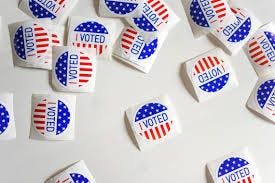Don’t worry—this is not a history of the development of the U.S. presidential election system!
It’s more like a sad complaint.
So, in our system, when a presidential race seems close, all eyes are on the undecided voter. That’s natural. Candidates don’t need to worry so much about the voter who can be expected to vote the party line; they need to attract those who can be swayed. That’ll give them the edge.
But also in our system, all eyes are not on all undecided voters. All eyes are on the undecided voters in the small number of states we call battlegrounds, where a contest can gain one candidate or the other a plurality of the votes; and where, as in all but two states, the candidate who wins that plurality will automatically be awarded all of the state’s electoral votes, with a total of 270 of those votes needed to win the presidency.
The effect, as most of us know and at this point take largely for granted, is that a very small number of people living in a very small number of states—some of whom will end up not voting anyway—decide the outcome of the only nationwide election we have.
And that way of electing a president seems to me self-evidently inane.
I know there are people who still defend the ongoing existence of what we call the Electoral College, and all I can say is that I find it impossible to believe that if you were starting from scratch, you would deliberately design a presidential election system that works like ours. That’s why “inane” comes to mind, but as with all absurd systems, the deleterious effects go way beyond mere absurdity. They distort what we generally take, anyway, to be the intent of the process.



